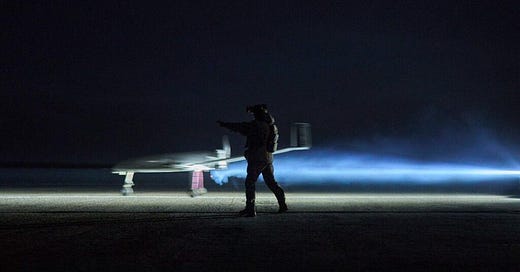The Single Drone Target That Could Cripple Russia's Oil Empire
A small German-made component inside Russian refineries has become Ukraine's most tantalizing target—the Achilles heel of Putin's $189 billion war machine.
On 22 June 2022, four months after a powerful Russian force rolled east across Ukraine, widening Russia’s war on Ukraine, the Ukrainians took the war to Russia. A pair of explosives-laden long-range drones motored at least 160 kilometers from free Ukraine and struck the oil refinery in Novoshakhtinsk, in Rostov Oblast in western Russia.
The blasts inflicted only minor damage. But they signaled what would, more than two years later, become a main effort in Ukraine’s war strategy: using drone warfare to target Russia’s economic backbone.
Ukrainian drone strikes on Russian oil refineries in late 2024 and early 2025 depressed Russia’s production of petroleum products—most importantly, gasoline—by as much as 10%, with cascading effects on Russian military logistics and exports.
“These cascading effects, which erode Russia’s economic resilience, increase operational costs and expose vulnerabilities in its energy-dependent war economy,” said Olena Lapenko, general manager on security and resilience at the DiXi Group think tank in Kyiv.
Most importantly, they’re a proof of concept. With a growing stable of bomb-dropping or self-exploding Ukrainian long-range attack drones capable of reliably traveling as far as 1,600 kilometers inside Russia, Ukraine can hold at risk the most important machinery of Russia’s wartime economy.






Cracking units are at the heart of the refining process, quite complex, very high pressure, and very expensive and time consuming to replace.
The Russians would be truly stupid if the critical parts of their refineries didn’t start looking like their cope cage tanks with multiple layers of nets, chains, etc. to prevent subsonic drones from getting too close.
These drones are, for now, relatively low & slow assets attacking the refineries. That may change in the future with higher speed delivery systems like StS Neptune variants and Grom Missiles that Ukraine is reportedly developing.
Actually breaking a cracker is likely hard unless you score a good or close hit. By virtue of what they do and how they do it, the walls are thick to contain the pressures inside.
But unlike all the German replacement machine tool parts being “exported” to Kyrgyzstan, Dubai, and elsewhere (ie smuggled to Russia via a proxy), cracking units are so bespoke that replacements cannot be smuggled as easily.
Furthermore, I doubt Russia has a lot of domestic expertise and manufacturing left that can be devoted to the replacement of Balance-of-Plant components around a cracking unit.
So even if the cracker itself is not breached, repairing the myriad of control systems, pipes, valves, etc. takes time, expertise, purchased parts, etc. that might be very difficult to get at this point.